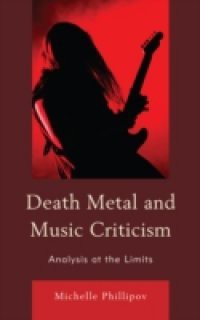Death metal is one of popular musics most extreme variants, and is typically viewed as almost monolithically nihilistic, misogynistic, and reactionary. Studies tend to view the music as a reflection of these listeners social conditions and are concerned with metals pleasures so long as these can be seen within that context: as responses to cultural and economic circumstances.Michelle Phillipovs Death Metal and Music Criticism: Analysis at the Limits, in contract, offers an account of listening pleasure on its own terms. Through an analysis of death metals sonic and lyrical extremity, Phillipov shows how violence and aggression can be configured as sites for pleasure and play in death metal music, with little relation to the real lives of listeners. In some cases, gruesome lyrical themes and fractured song forms invite listeners to imagine new experiences of the body and of the self. In others, the speed and complexity of the music foster a technical or distanced appreciation akin to the viewing experiences of graphic horror film fans. These aspects of death metal listening are often neglected by scholarly accounts concerned with evaluating music as either progressive or reactionary. By contextualizing the discussion of death metal via substantial overviews of popular music studies as a field, Phillipovs Death Metal and Music Criticism highlights how the premium placed on political engagement in popular music studies not only circumscribes our understanding of the complexity and specificity of death metal, but of other musical styles as well. Exploring death metal at the limits of conventional music criticism helps not only to develop a more nuanced account of death metal listeningit also offers some important starting points for a rethinking of popular music scholarship as a whole.

